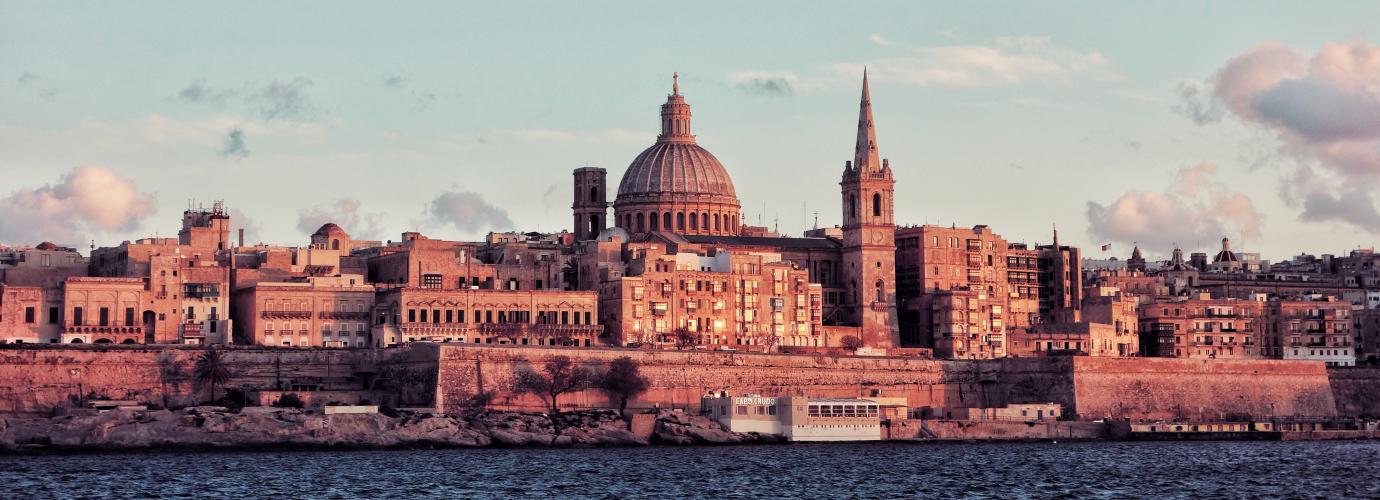Malta boasts of a rich historical heritage dating back more than 7,000 years. Malta’s rich and distinct history is linked to its geographical location in the centre of the Mediterranean Sea, offering an excellent strategic position both in terms of military and trading objectives. This factor, together with its fine ports, made Malta a sought-after colony to acquire. Consequently, Malta had a succession of powers including the Phoenicians, Arabs, Normans, Romans, Aragonese, French and the British ruled the Maltese Islands. The longest and most recent foreign reigns include those of the Knights of Malta (1530-1798) and the British (1800-1964).
In the Middle Ages formal education was taught by religious orders, focusing mostly on Latin, Italian and numeracy. The Arabs, who ruled Malta between 870 and 1091 A.D., shaped the development of the Maltese language (the only Semitic language written in Latin script and the only Semitic language of the EU) and that of many of modern Maltese place names and surnames. The Knights of Malta, noblemen from various Europe states, profoundly enriched the islands’ architectural and artistic heritage. The University of Malta knows its origins during the Knights’ rule although access to education for the poor in that period was limited since they could not afford it. In 1798, Napoleon Bonaparte, leading the French, took over Malta, and among others proposed the introduction of 15 public schools on the island. Nonetheless, this remained a proposal, given that the French rule ended abruptly in 1800 when Malta fell under the British empire following an insurrection by the Maltese.
The Royal Commission of 1836 found that there were just three primary schools in Malta, and suggested establishing more schools, increasing teachers’ pay and doubling the expenditure on education. Nonetheless the commission also found that illiteracy among the working class was rife since these families were too poor to send their children to school. The British rule brought about several educational changes starting in 1850, with the establishment of a model school at Valletta to train teachers. In 1878, the Royal Commission suggested the establishment of a Department of Education, which took place in 1880. The 1946 Compulsory Education Ordinance made primary education compulsory for all Maltese children between the ages of 4 and 14, which led to infrastructural investment in education. However, access to secondary education was reserved for those passing the 11+ admission examinations or by enrolling in a private school. The educational model adopted was largely that of the British system, which in many respects is still the prevalent model today.
The years following World War II, when Malta was under British rule, were a time to adapt Malta's philosophy of education, equipping it to deal with the challenges of a small island facing the future. It was during this period that the idea of education replaced the concept of instruction, thanks to the introduction of pre-service teacher training which was provided by two religious orders.
In the years preceding and following Malta becoming a sovereign State in 1964, there was a new sense of commitment towards Maltese culture and society and to building the Maltese economy. To this end, in 1970, secondary education for all was introduced in the Constitution, as it remains today, followed by the crucial enactment of the Education Act in 1974.
In 1974, Malta became a Republic, founded on work and respect to the fundamental rights and freedoms of the individual, enshrined in the Maltese Constitution established in 1964. Tourism and the manufacturing industry became crucial for Malta, particularly after the end of the British military presence (a major employer and source of government revenue) on the island in 1979. A greater emphasis was therefore placed on tuition of trades in government trade schools and on tuition of subjects relating to the tourism industry which eventually led to the establishment of the Institute for Tourism Studies (ITS) in 1987.
In 1990 Malta lodged its application for membership of the then European Community. In May 2004, after the successful transposition of all EU directives into national legislation and the implementation of the EU Acquis, Malta joined the European Union. This was followed by the successful adoption of the Euro as the National Currency on 1 January 2008. Since 2007 Malta has also been a member of the Schengen area. Maltese economy shifted towards the services industry particularly involving the financial and I-gaming sectors. This brought about more demand for courses leading to degrees in European, Social, IT and Financial studies and to the growth of both the University of Malta (UM) and the Malta College for Arts, Science & Technology (MCAST).
Malta’s society, and also its schools, have become increasingly heterogeneous. Malta’s population increases over the last decade has largely stemmed from immigration: sub-Saharan migrants seeking asylum; European nationals exercising their right to freedom of movement within the EU; and third-country nationals who are granted a working permit to work in sectors such as construction, health and care and cleaning. These changes have impacted both the content and the method of instruction.

